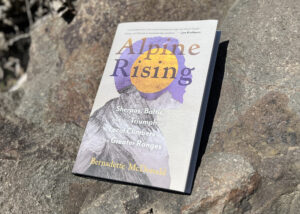Mauli Dhan Rai harvested honey from cliff faces in northeastern Nepal. To do it, he dangled more than 200m from the valley floor using a handmade bamboo rope. Bees constantly stung hm. He had no protection. He didn’t even use a harness.
The traditional honey harvesting method is risky, but until recently, ‘mad honey’ fetched more than $15/kg. On the black market, it sold for $160/kg. Rai enlisted others to help him. They used the proceeds to support their community. Without it, they couldn’t afford items like salt or cooking oil.
Hallucinogenic honey from rhododendrons
What makes each harvest so lucrative is the honey’s hallucinogenic properties. Apis laboriosa bees (the world’s largest bees) produce honey by feeding on poisonous rhododendron flowers. Then it’s exported for medicine. There are only two places in the world where this honey is produced. The other place is near the Black Sea, in Turkey. It’s equally precious there.
Even though honey harvesting is considered one of the most ancient human activities, the traditional method is under threat in Nepal. The government wants to profit from the practice. They are gradually claiming the land and contracting harvests. But the 57-year-old Rai didn’t voluntarily choose this profession anyway. He believed he was cursed. Tired, he wanted to hand over the responsibility.

Mauli Dhan Rai doesn’t use a harness or bee suit. He climbs 200m using a handmade bamboo ladder.
Twice a year, he hiked more than 20km through the dense jungle from his village. To scale the cliffs where the hives perched, he grabbed hold of foliage roots and winched himself upward. Even though a wrong root selection would be fatal, he didn’t use safety equipment.
To lure the bees from their hives, his helpers created acrid smoke below. As it billowed upward, Rai dangled in mid-air from his flimsy ladder and guided the honey into a basket using two long sticks. Not immune from the brutal stings, he received hundreds each harvest. Not even his mouth or eyes were spared.
“Just think of how much destruction I cause when I take even one hive,” Rai said. “This must come back to haunt me somehow.”
A spiritual burden
Rai’s profession burdened him. He was the one person able to harvest honey in this area. The Kulung people believe a spirit called Rongkemi rules over the mountains, forests, and valleys, protecting the bees and their hives. Only Rai, who had a special dream, could safely harvest the honey without provoking Rongkemi.
As he climbed, he chanted a Kulung mantra: “You are Rangkemi. You are of the bee spirits. We are not thieves. We are not bandits. We are with our ancestors. Please fly. Please leave.”
Dying traditions like this one aren’t exclusive to Nepal. In Sri Lanka, ancient stilt fishing has become a tourist attraction rather than a means of feeding a community. In the case of Nepal’s honey hunting, ownership is gradually shifting away from local villagers to companies. Even if it wasn’t, the practice isn’t desirable to the younger generation, which seeks a more prosperous urban future.
In 2017, professional climbers Renan Ozturk and Mark Synnott joined Ben Ayers and Ben Knight to follow Rai on his final harvest. For 15 years, Ayers had visited Nepal, mostly for climbing. Over time, he built trust with members of the Kulung community, which allowed him to capture their dying tradition.
Ozturk and Synnott are professional climbers, and even they struggled to keep up with Rai as he scaled the cliffs. Their American bee suits with multiple clothing layers beneath couldn’t protect them from the stings of these large bees, either.
Soon after the film crew preserved this ancient tradition and Rai’s grueling job, Rai took his own life. The curse, and the burden, had taken their toll.






